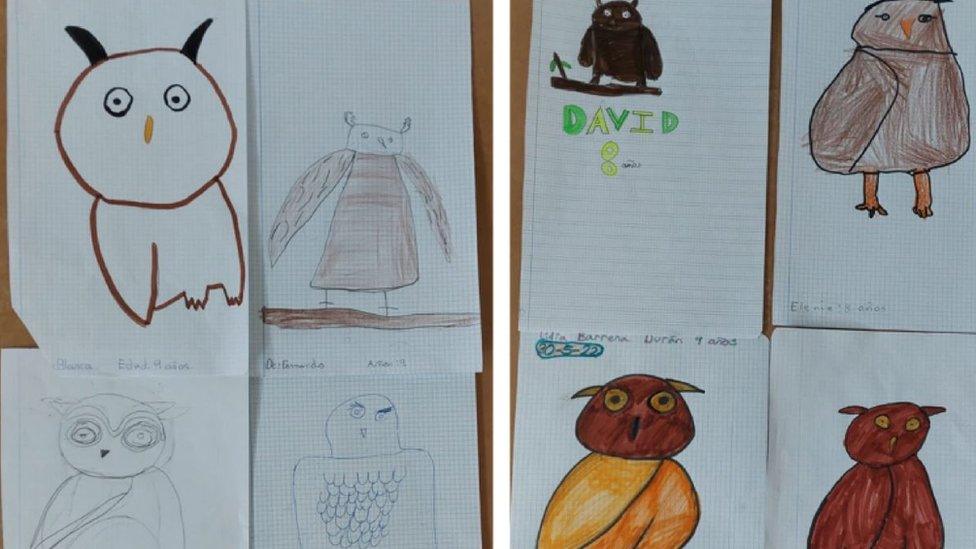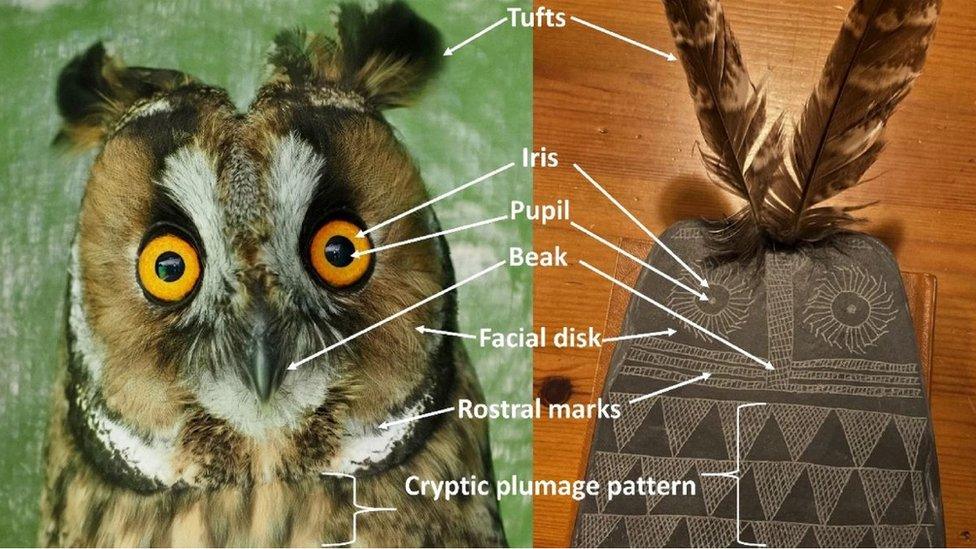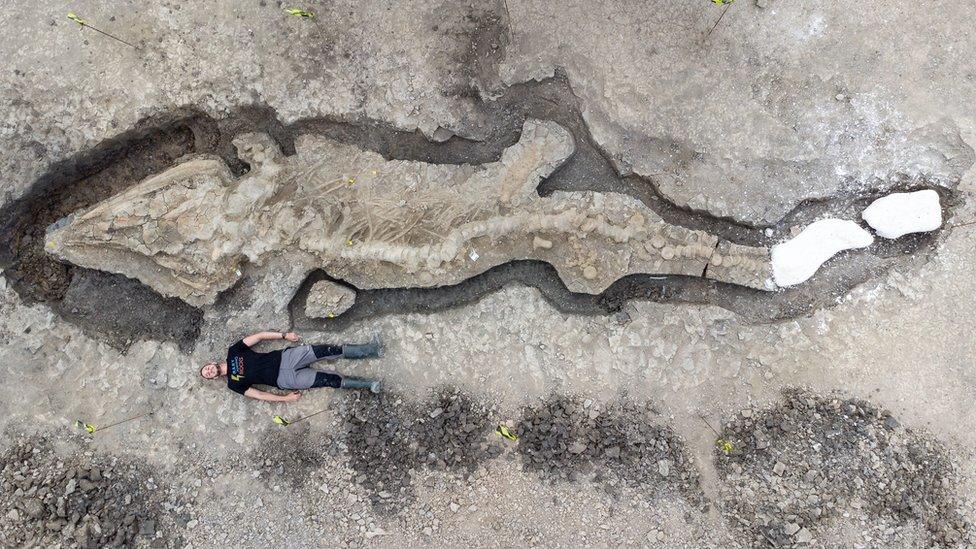Owl plaques may have been created by Copper Age children
- Published
- comments

Owl engravings found in Spain could have been made by children to be used as toys, a new study suggests.
They are thoughts to be around 5,000 years old and were found in the South West of the Iberian peninsula, mainly Spain and Portugal.
Researchers originally thoughts plaques had be used for rituals and studied the engravings made on slate which show owl-like images often with wide eyes and a body.
They then compared them to drawings made by modern children and concluded that they were more likely created by children to play with.
The engravings are from the Copper Age, which was around 6,500 to 5,500 years ago from approximately 4500 B.C. to 3500 B.C.
Slate is a common rock which is easily drawn on using pointed tools made of flint, quartz or copper.

Drawings made by pupils at a school in Spain which researchers compared to the engravings
The authors of the study which is published in the Scientific Reports journal, think that owls were chosen because they are quite simple to draw.
To test their theory that the engravings could have been created by children, the researchers looked online for owl images drawn by children 4 to 13 years-old.
They then took 100 of the ancient plaques and examined how similar they looked to the children's drawings they had seen online, considering how many owl traits they had - the eyes, feathers, beak.

comparing a long-eared owl and a feather-decorated replica of the Valencina slate plaque
Many of the plaques had two holes at the top which researchers believed could have been used for feathers to make the engravings even more owl-like.
Around 5,000 years ago stone toys became less popular and their replacements, which were made from materials like wood and fabric, breakdown over time which meant there haven't been many examples for archaeologists to study.
For this reason this discovery is very valuable to the researchers, saying in the study "owl-like objects made in stone provide perhaps one of the few glimpses to childhood behaviour in the archaeological record of ancient European societies".
- Published10 January 2022

- Published18 January 2021

